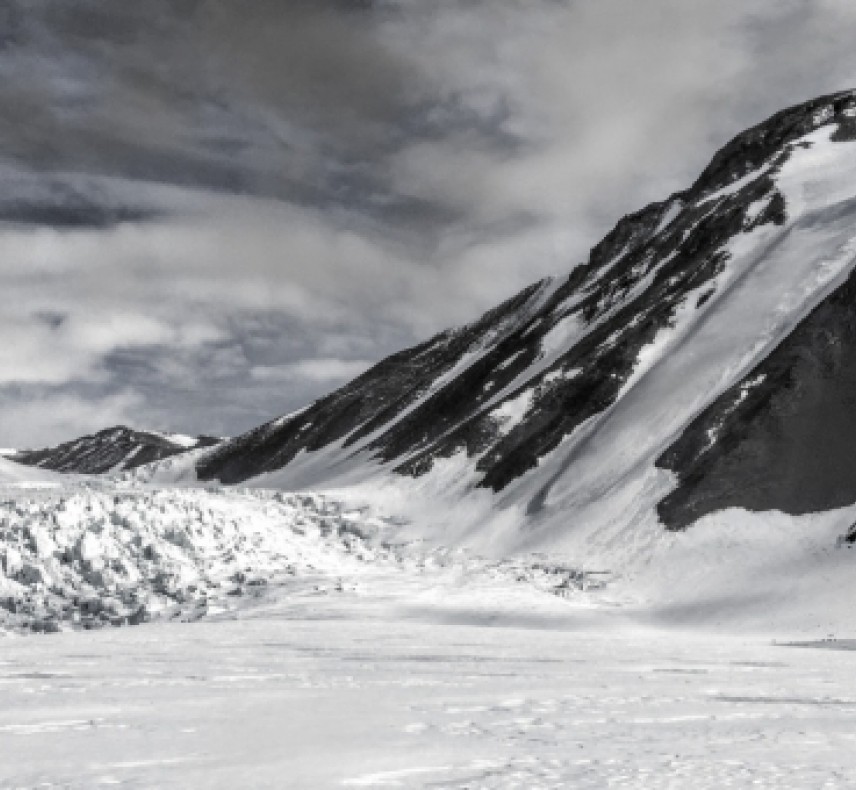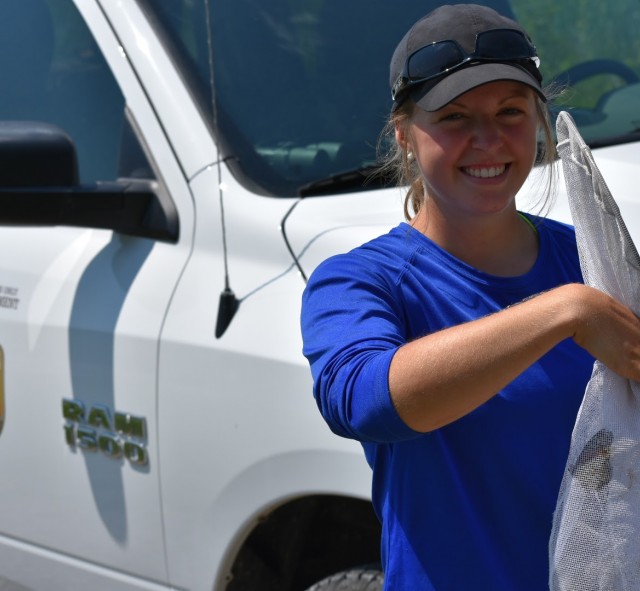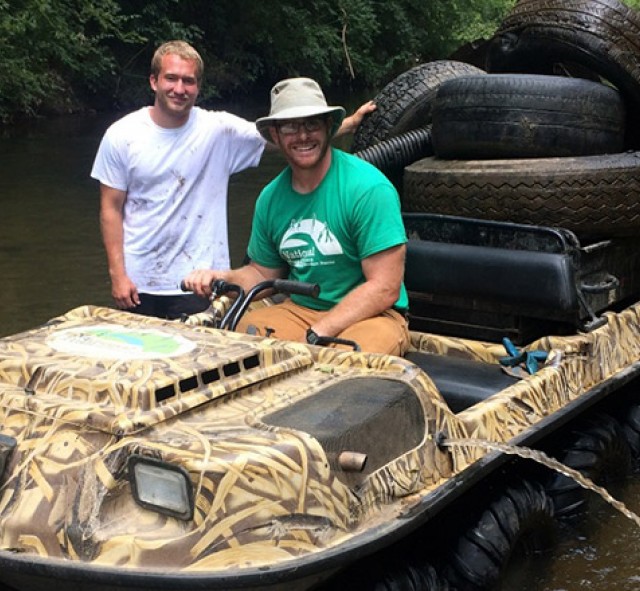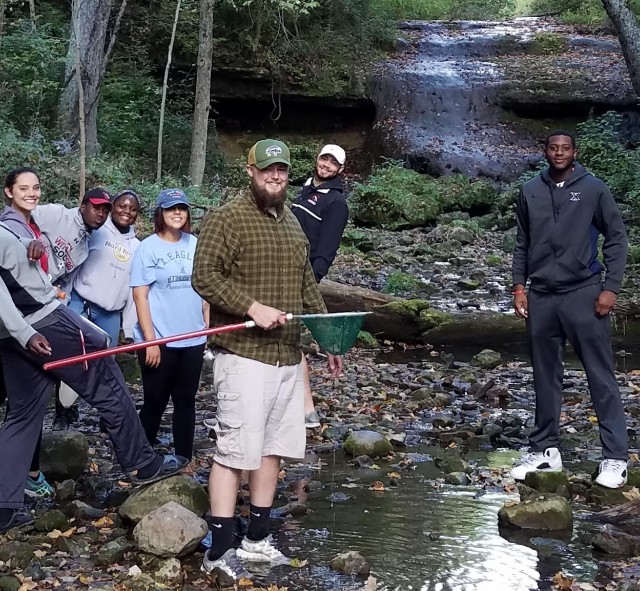Sarah Fortner, assistant professor of geology and environmental science at Wittenberg University, recently visited the McMurdo Dry Valleys in Antarctica to explore the chemistry of glacier melt as part of the McMurdo Long Term Ecological Research Program. The Dry Valleys are ice-free valleys located within Victoria Land west of McMurdo Sound. This work extends from early research she conducted on snow and stream chemistry on glaciers at all latitudes.
Chemistry Of Glacier Melt

"Glacier melt chemistry is important to downstream ecosystems," Fortner said, adding that "the McMurdo Dry Valleys are considered as an ecological end member because it is exceptionally cold and dry. Typically, less than 10 centimeters of snow fall each year. Life in the dry valleys is largely supported by melt water from glaciers. This water contains chemistry that is essential to ecosystems. Globally, glacier melt chemistry is also important to the chemistry of oceans and to humans who use melt as a water source."
Fortner was part of the McMurdo Long Term Ecological Research team. This project includes 12 principle investigators each who have small teams working to study all aspects of the ecosystem. Fortner worked to evaluate glacier melt chemistry with her principle investigator Berry Lyons, director of the School of Earth Sciences at The Ohio State University and her Ph.D. advisor/collaborator.
There are 27 sites across the United States and two in Antarctica that are part of the Long Term Ecological Research Network (LTER) where monitoring of climate, water, and ecosystems takes place.
"Long term monitoring builds our knowledge of environmental interactions," Fortner said. "For example, there is a lot of interest in how climate change influences water availability and habitability for species. New discoveries also emerge as sites are looked at together and new analytical approaches are developed."
Fortner is nationally recognized for her leadership in sustainability and service learning curriculum. She currently serves as a co-chair of the Council on Undergraduate Research Innovation & Collaboration Task Force and was recently awarded volunteer of the year for her leadership. She has also co-led a sustainability implementation effort at Wittenberg that is published through the InTeGrate Project as a model for other programs.
Wittenberg's sustainability approach is published as a web module for other programs interested in building an interdisciplinary sustainability curriculum. Wittenberg's effort features 15 programs, including the First Year Seminar and course collaboration with community partners. Fortner also serves as a curricular advisor and faculty on a summer research expedition on the Juneau Icefield Research Program in Alaska, advises a middle school literacy program called Polar Ice and is a leader for the National Association for Geoscience Teachers Building Strong Programs effort that assists geoscience, environmental, and sustainability programs with planning growth and supporting diversity.
"My interest in supporting collaborative opportunities for undergraduates grew from taking part in the synergist LTER," she said. "Working with community partners, students, and faculty from Wittenberg and other institutions makes it possible to not only conduct better research, but to engage in community problem solving. This season, I was thrilled to get back to my LTER/glacier research roots."
Check out the photos from her most recent trip: http://arcg.is/2jSKgxfhttp://arcg.is/2jSKgxf
About Sarah Fortner:
Sarah Fortner is an assistant professor of geology and environmental science at Wittenberg University. Her mission is to research and promote earth resource sustainability. Her students work with community experts on issues of food security, soil sustainability, environmental pollution and water health. Her research interests include: glacier biogeochemistry, land use and climate watershed biogeochemistry, and urban sustainability. Fortner's expertise also includes interdisciplinary and sustainability program development and evaluation.
She has conducted work exploring the sources and fate of chemistry on temperate, tropical, and polar glaciers. This includes the Taylor Valley, Antarctica, Juneau Icefield, Alaska, Cordillera Blanca, Peru, Columbia Icefields, Canada, Mount Hood, Oregon, North Cascades, and Washington. To reach Sarah Fortner, email -sfortner@wittenberg.edu.
About Wittenberg
Wittenberg's curriculum has centered on the liberal arts as an education that develops the individual's capacity to think, read, and communicate with precision, understanding, and imagination. We are dedicated to active, engaged learning in the core disciplines of the arts and sciences and in pre-professional education grounded in the liberal arts. Known for the quality of our faculty and their teaching, Wittenberg has more Ohio Professors of the Year than any four-year institution in the state. The university has also been recognized nationally for excellence in community service, sustainability, and intercollegiate athletics. Located among the beautiful rolling hills and hollows of Springfield, Ohio, Wittenberg offers more than 100 majors, minors and special programs, enviable student-faculty research opportunities, a unique student success center, service and study options close to home and abroad, a stellar athletics tradition, and successful career preparation.






